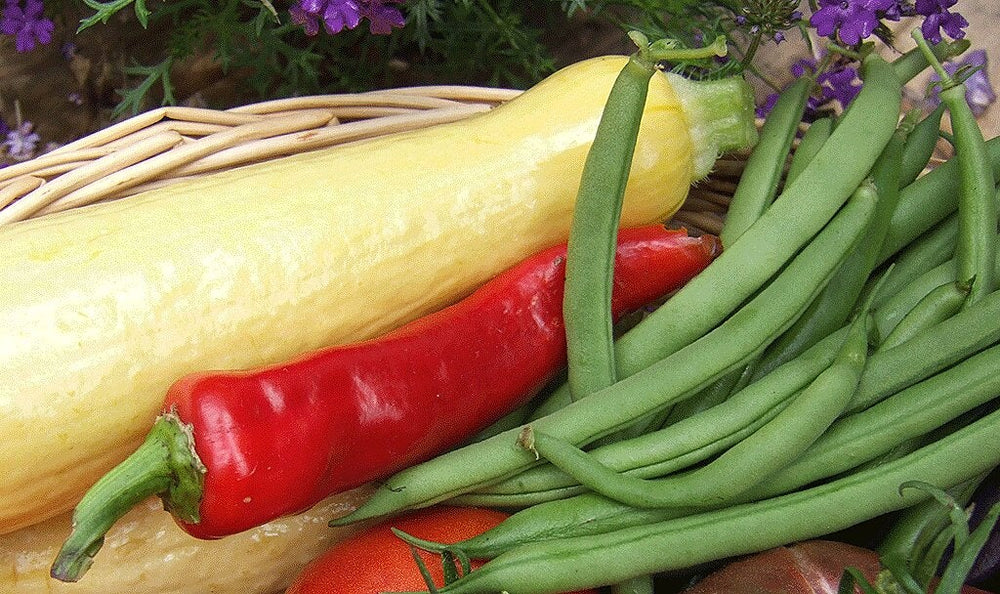When your summer harvest starts coming in fast and furiously, it can be a little overwhelming. While your first instinct may be to just put it all in the fridge and hope it'll last until you can eat it, the average refrigerator temperature (35°-38°F) is simply too cold for many warm-weather crops. Here's how to store summer vegetables so they'll last (and keep their delicious flavor) a little bit longer.
Leave the stem attached
With vegetables like cucumbers, peppers, squash, and eggplants, it's a good idea to leave bit of stem when you harvest them. This helps seal the stem end against bacteria, so the fruit will last longer.
Don't wash vegetables until you're ready to use them
If you wash produce before storing it, any lingering moisture in those cracks and crevices can cause it to go bad prematurely. Instead, just brush off all visible dirt (use a soft cloth for this if you need to). If produce is wet and dirty at picking, let it dry, then brush off any dirt and blossom bits (use a soft cloth for this if you need to) before storing, as they can cause decay to set in. For especially stubborn bits, a quick rinse should be your last resort. Let the produce sit out overnight to make sure it dries completely before storing.

Put ripe peppers, summer squash, green beans, and cantaloupe in the fridge
For best results, wrap fresh produce in a paper towel or thin cotton dish towel, then put it in a perforated plastic bag to boost humidity. You can either stock up on veggie storage bags or make your own by pricking pin holes in the plastic produce bags from the grocery store (aim for about 20 pin-size holes in a gallon-sized bag). Put the bag in the crisper drawer or toward the front of one of the shelves farthest from the freezer, as those tend to be the warmest spots in the fridge. For best flavor, allow produce (especially cantaloupes) to ripen fully before refrigerating.
Store ripe tomatoes, eggplants, cucumbers, okra, and watermelons in a cool, humid place
These vegetables just can't handle the chilliness of the fridge. Ironically, though, the kitchen counter isn't the best alternative once fruit is ripe, since the kitchen tends to be the warmest room in most houses. Look for the coolest, most humid spot in your home. Good options to consider include the basement, an insulated garage, a north-facing room, or a root cellar (if you're lucky enough to have one). Make sure the spot you pick is out of direct sunlight and has good air circulation. A basket or bin works well to store most of these vegetables (just avoid any loose wicker pieces), but keep ripening tomatoes on a solid surface like a plate. If you lack a spot with high humidity, try slowing moisture loss by slipping veggies into a vented plastic bag or container. (Once you cut or peel any type of produce, though, it needs to go into the fridge.)
Consider getting a second fridge
The best storage solution of all may cost a bit, but would pay for itself in no time: a second fridge set at 50°F, an ideal temperature for storing almost any summer vegetable. A mini fridge is a great, space-saving choice for this. Some gardeners set aside space in their refrigerated wine cooler (typically set for 53°-57°F) during the growing season to hold freshly-picked produce.
Of course, you don't have to try to eat everything fresh. Consider freezing, drying, canning, or pickling big harvests so you'll still be able to enjoy summer goodness once the cool weather sets in!
Article written by Julie Martens Forney.




 Herbs
Herbs
 Vegetables
Vegetables
 Fruit
Fruit
 Flowers
Flowers
 Succulents
Succulents


